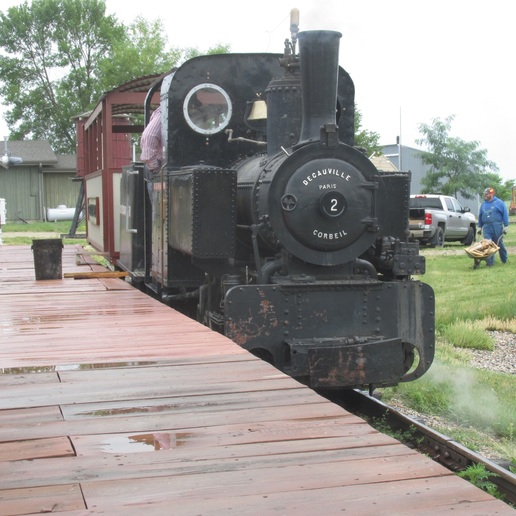Geo-TH,In
Well-known Member
My dad was born in 1920 and in the early 1940's when in his early 20's he lived in Fort Wayne, In and worked on the Pennsylvania RR that ran into Chicago.
He would say the best way to make coal fire burn faster is to add steam.
AS a kid, I didn't understand. I thought adding steam, water, would put a fire out.
Adding steam to hot coal is actually producing hydrogen gas.
Who would have thunk the old steam engines were the engine of the future hydrogen powered? LOL
They claim that adding steam to any carbon fuel, including wood, would make hydrogen.
The chemistry of making hydrogen isn't simple one step process. All the same end result my dad was making hydrogen using coal and steam.
To produce hydrogen from coal, the process begins with partial oxidation, which means some air is added to the coal, which generates carbon dioxide gas through traditional combustion. Not enough is added, though, to completely burn the coal only enough to make some heat for the gasification reaction.
Carbon dioxide reacts with the rest of the carbon in the coal to form carbon monoxide (this is the endothermic gasification reaction, which needs heat input). No hydrogen yet. Carbon monoxide in the gas stream is now further reacted with steam, generating hydrogen and carbon dioxide. Now we are making some hydrogen.
Steam engines show up at festivals usually powering a sawmill.
Does any use steam to get the fire in the steam engine burning faster? I'm sure you have to work with a hot bed of coals for this to work.
He would say the best way to make coal fire burn faster is to add steam.
AS a kid, I didn't understand. I thought adding steam, water, would put a fire out.
Adding steam to hot coal is actually producing hydrogen gas.
Who would have thunk the old steam engines were the engine of the future hydrogen powered? LOL
They claim that adding steam to any carbon fuel, including wood, would make hydrogen.
The chemistry of making hydrogen isn't simple one step process. All the same end result my dad was making hydrogen using coal and steam.
To produce hydrogen from coal, the process begins with partial oxidation, which means some air is added to the coal, which generates carbon dioxide gas through traditional combustion. Not enough is added, though, to completely burn the coal only enough to make some heat for the gasification reaction.
Carbon dioxide reacts with the rest of the carbon in the coal to form carbon monoxide (this is the endothermic gasification reaction, which needs heat input). No hydrogen yet. Carbon monoxide in the gas stream is now further reacted with steam, generating hydrogen and carbon dioxide. Now we are making some hydrogen.
Steam engines show up at festivals usually powering a sawmill.
Does any use steam to get the fire in the steam engine burning faster? I'm sure you have to work with a hot bed of coals for this to work.


